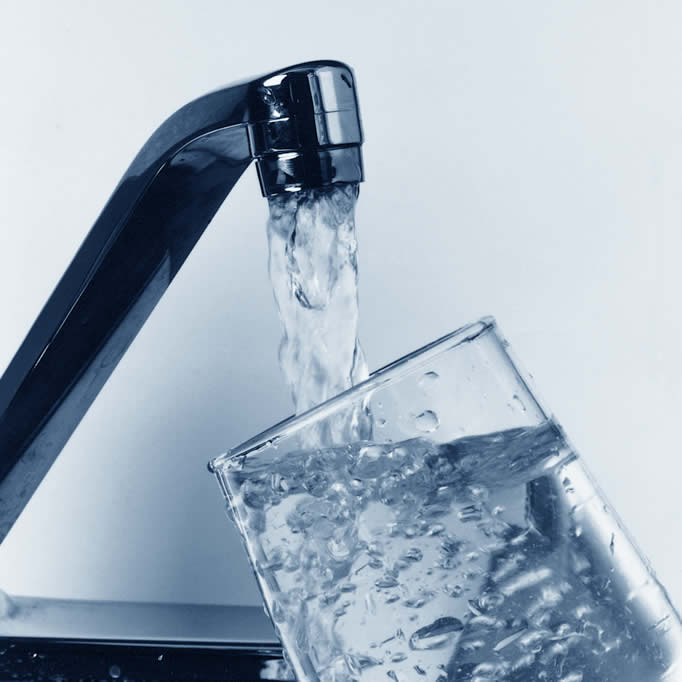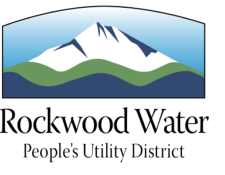Testing Your Water for Lead
To request a free lead-in-water test kit visit: www.portland.gov/water/LeadTest or call the Water Quality Line at 503-823-7525.
SOURCES OF LEAD
Lead is rarely found in our source water, and we have removed all known lead service connections from our distribution system. In accordance with the Environmental Protection Agency’s Lead and Copper Rule, we are required to post the materials inventory, locations of lead service lines, and an inventory or map of lead service lines and lead plumbing in our system. To meet that requirement, we are posting a copy of the letter we sent to the Oregon State Health Division Drinking Water Program in 1986 confirming we do not have any lead service lines in our system. Click here to view a copy of that letter.
There is no lead in our water supply, either Bull Run or our wells, but lead can get into drinking water in our District by means of home plumbing. Houses plumbed between 1970 and 1985 with copper pipe that may have lead in the solder, and houses with brass plumbing fixtures that contain lead, are most likely to encounter elevated lead levels. There are no lead service connections in the District.
Get the facts about lead in your drinking water by clicking here.
You can download a printer-friendly version of our 2017 Lead Brochure at the links below, or you can scroll down to view the information on this page. You can also press the Google Translate button in the upper right of the page to translate the information into the language of your choice.
Lead Brochure in English
Lead Brochure in Spanish
LEAD BROCHURE
REDUCE EXPOSURE TO LEAD IN DRINKING WATER AND HOUSEHOLD PLUMBING
 Recent monitoring results from homes exceeded the regulatory level for lead in drinking water. Rockwood Water People’s Utility District found elevated levels of lead in drinking water in some homes/buildings. Lead can cause serious health problems, especially for pregnant women and young children. Please read this information closely to see what you can do to reduce lead in your drinking water.
Recent monitoring results from homes exceeded the regulatory level for lead in drinking water. Rockwood Water People’s Utility District found elevated levels of lead in drinking water in some homes/buildings. Lead can cause serious health problems, especially for pregnant women and young children. Please read this information closely to see what you can do to reduce lead in your drinking water.
Health Effects of Lead
Lead can cause serious health problems if too much enters your body from drinking water or other sources. It can cause damage to the brain and kidneys and can interfere with the production of red blood cells that carry oxygen to all parts of your body. The greatest risk of lead exposure is to infants, young children, and pregnant women. Scientists have linked the effects of lead on the brain with lowered IQ in children. Adults with kidney problems and high blood pressure can be affected by low levels of lead more than healthy adults. Lead is stored in the bones, and it can be released later in life. During pregnancy, the child can receive lead from the mother’s bones, which may affect brain development.
Sources of Lead
Lead is a common metal found throughout the environment. Common sources of lead exposure are lead-based paint, household dust, soil and plumbing materials. Lead is also found in other household objects such as toys, cosmetics and pottery.
Lead is rarely found in the District’s source waters, and there are no lead-based service lines in our distribution system. Today, the main sources of lead in water in the District area are from the plumbing in homes and other buildings. Lead solder was once used to join copper pipes, brass plumbing fixtures and components, including those advertised as “lead-free.” In homes built or plumbed with copper pipes before 1985, lead solder may have been used. When water stands for several hours in plumbing systems that contain lead, the lead may dissolve into your drinking water. Water that has been sitting in household pipes for several hours, such as in the morning, or after returning from work or school, is the most likely to contain lead. If present, lead in drinking water may contribute 10 to 20 percent of a person’s exposure to lead.
Infants who consume mostly formula mixed with contaminated water could receive 40 to 60 percent of their exposure to lead from drinking water.
In this area, dust from paint in homes built before 1978 is likely the most common source of exposure to lead. Other sources include drinking water, soil, pottery, traditional folk medicines, cosmetics, toys and some occupations and hobbies.
Water Treatment and Programs
Lead enters drinking water primarily as a result of the corrosion, or wearing away, of materials containing lead in household plumbing. Our water is treated to reduce corrosion in plumbing by increasing the pH of the water. Comparison of monitoring results with and without pH adjustment shows over 50 percent reduction in lead at the tap. In addition to reducing lead exposure in drinking water, we support programs to reduce exposure to lead from all sources.
For information about the hazards of lead, ways to reduce your exposure to lead, and how to have your water tested for lead, contact the Multnomah County Health Department LeadLine, 503-988-4000 or https://multco.us/health/lead-poisoning-prevention.
 To reduce your exposure to lead in drinking water from household plumbing, Rockwood Water PUD encourages you to follow these easy steps:
To reduce your exposure to lead in drinking water from household plumbing, Rockwood Water PUD encourages you to follow these easy steps:
- Run your water to flush out lead. If the water has not been used for several hours, run each tap for 30 seconds to 2 minutes or until it becomes colder before drinking or cooking.
- Use cold, fresh water for cooking and preparing baby formula. Do not cook with or drink water from the hot water tap; lead dissolves more easily into hot water. Do not use water from the hot water tap to make baby formula.
- Do not boil water to remove lead. Boiling water will not reduce lead.
- Consider using a filter. Check whether it reduces lead—not all filters do. Be sure to maintain and replace a filter device in accordance with the manufacturer’s instructions to protect water quality. Contact NSF International at 800-NSF-8010 or www.nsf.org for information on performance standards for water filters.
- Test your water for lead. Contact the LeadLine at 503-988-4000 to find out how to get a FREE lead-in-water test.
- Test your child for lead. Call the LeadLine at 503-988-4000 to find out how to have your child tested for lead. A blood lead level test is the only way to know if your child is being exposed to lead.
- Regularly clean your faucet aerator. Particles containing lead from solder or household plumbing can become trapped in your faucet aerator. Regularly cleaning every few months will remove these particles and reduce your exposure to lead.
- Consider buying low-lead fixtures. As of January 4, 2014 all pipes, fittings and fixtures are required to contain less than 0.25% lead. When buying new fixtures, consumers should seek out those with the lowest lead content.
Testing Your Water for Lead
To request a free lead-in-water test kit visit: www.portland.gov/water/LeadTest or call the Water Quality Line at 503-823-7525.
The following is a list of some state-approved laboratories in the Metropolitan area you can call to have your water tested for lead. These labs charge a fee:
- Alexin Analytical Laboratories 503-639-9311
- Pyxis Laboratories 503-254-1794
- Edge Analytical Laboratories 503-682-7802
For Additional Information
Visit the Environmental Protection Agency’s website at www.epa.gov/lead .
For more information about your drinking water, call us at 503-665-4179. For more information on reducing lead exposure around your home/building and the health effects of lead, contact the LeadLine at 503-988-4000, or https://multco.us/health/lead-poisoning-prevention, or contact your health care provider.

